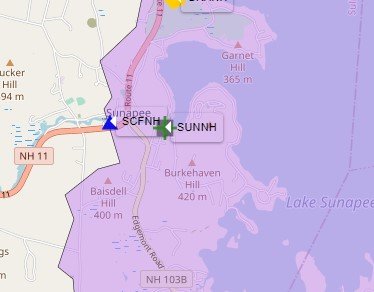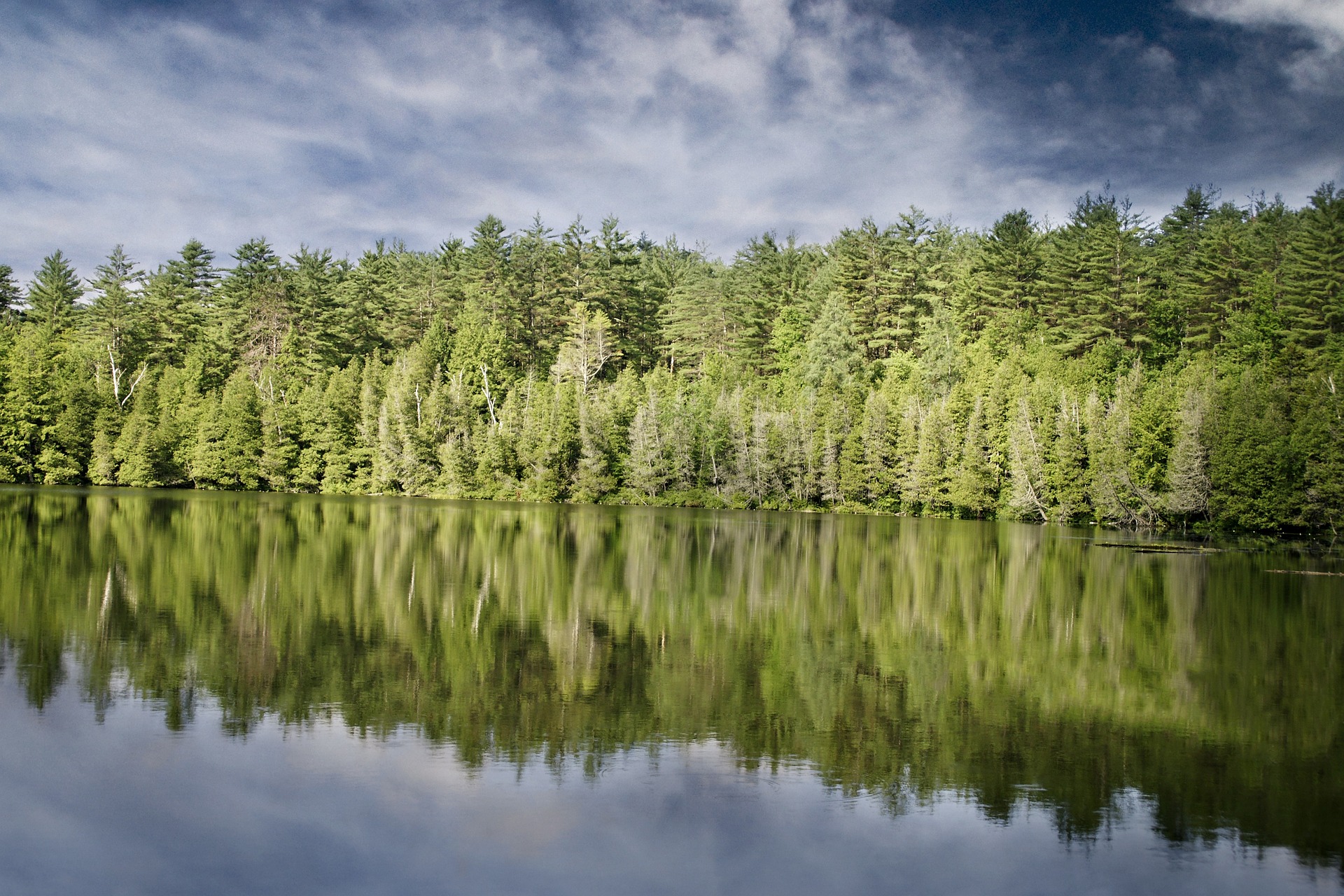Lake Sunapee
STATS
Lake Sunapee is located within Sullivan County and Merrimack County in western New Hampshire, the United States.
“Look deep into nature and then you will understand everything better.
— Albert Einstein

Lake Sunapee:
- Is the sixth largest lake located in New Hampshire covering about 4,155 acres in area (1,681 hectares)
- Is approximately 8.1 miles (13.0 km) long (north-south) and from 0.5 to 2.5 miles (0.8 to 4.0 km) wide (east-west), covering 6.5 square miles (17 sq. km)
- Has a length to width ratio of about 4 to 1 and a water to land ratio of 6 to 1
- Has a maximum depth of 112 feet (34.1 m)
- Contains 11 islands – Loon Island, Elizabeth Island, Twin Islands (2), Great Island, Minute Island, Little Island, Star Island, Emerald (Burkehaven) Island, Isle of Pines and Penny Island
- Is indented by several peninsulas and lake fingers
- Has four public boat ramps and one private ramp open to the public to access the lake at Sunapee Harbor, Georges Mills, Mount Sunapee State Park, Burkehaven, and Blodgett Landing
- Contains three lighthouses on the National Register of Historic Places
- Has a 25-mile (40km) driving distance around the lake with many miles of lake water view
- Is 1,093 feet (333 m) above sea level
- Has an outlet in Sunapee Harbor, the headway for the Sugar River, which flows west through Newport and Claremont to the Connecticut River and then to the Atlantic Ocean
SUNAPEE HARBOR DAM

The Lake Sunapee watershed serves as the headway for the Sugar River beginning downstream of the dam. The NH Department of Environmental Services (NHDES) Dam Bureau maintains the Sunapee Harbor outlet dam which is used for flood control. Lake level, air temperature and precipitation is measured at the outlet. Click here to view the data. The Dam Bureau opens the gates of the dam in early October to lower the Lake’s water level a few feet. Full draw down is usually reached by February or March to make room for spring runoff. Contact NH DES Dam Bureau at 603-271-3406, with any concerns.
THE BEGINNING
Lake Sunapee is a glacial lake, with geological faults and a graben structure. As the last glacier retreated around 11,000 years ago, it deposited large rocks in the landscape. These rocks are called glacial erratics. An example of a large glacial erratic can be found on Minute Island in front of the John Hay Wildlife Refuge, as seen along the wildlife shoreline trail. Native Abenaqui called the lake Soo-Nipi, which translates to “Rocky Lake”. Lake Sunapee resembles a bird (goose) in flight, with the bird’s head as the harbor area, from an aerial view, and at times from Mount Sunapee. The Penacooks, the local group of the Abenaqui around Sunapee, hunted in the autumn and fished using nets, weirs and spears.
THE STEAMBOAT ERA
Following the extension of the B&M Railroad into Newbury, Lake Sunapee became a popular vacation area long before the introduction of the automobile. The main rail station was at Newbury Harbor, the southernmost point of the lake. Today, the village contains a colorful antique caboose commemorating the railroad line that passed by, bringing vacationers from other parts of the country. Steamboat service developed on the lake to accommodate the new populace. Steamships ferried passengers from the south end of the lake to cottages and large resort hotels around the lake. Bay Point, Blodgett Landing, and Indian Cave, later known as Lake Avenue, were the most populated piers. One of the first commercial boats was actually propelled by horses in 1854. N.S. Gardner purchased Little Island for $1.00 and put a bowling alley on it. He then launched the Penacook (later renamed Mountain Maid) steamer to carry passengers to Little Island, and so the steamboat era began.
THE WOODSUM BROTHERS
The Woodsum Brothers launched the Lady Woodsum in 1876. It was 50-feet (15 m) long and could carry 75 passengers. The 90-foot (27 m) Edmund Burke was launched in 1885, carrying 600 passengers. In 1887, the Armenia White was launched; it was 101-feet (31 m) long and carried 650 passengers. It was the flagship of the Woodsum fleet and the biggest steamer ever to sail Lake Sunapee.
THE FINAL STEAMSHIP YEARS
In 1897 the 70-foot (21 m) steamship Kearsarge was launched carrying 250 passengers daily in the summer months. In 1902 the 50-foot (15 m) Weetamoo was launched and was later scuttled near Newbury. The ship is still intact and is visited frequently by local SCUBA clubs. The pilothouse of the Kearsarge was salvaged from the lake in the 1960s and is on display at the Sunapee Historical Center. The 52-foot (16 m) MV Mount Sunapee II was launched in 1965 to take passengers on lake cruises in summer months. The original Mount Sunapee was named Susie Q. There were major steamer landings at Sunapee Harbor, Georges Mills, Lakeside Landing, Hastings Landing, Auburn Landing, Blodgett Landing, Brightwood, Pine Cliff, Lake Station, Soo-Nipi, Burkehaven, and Granliden to serve the grand hotels. The automobile led to the demise of the steamer era.
TODAY’S CRUISE BOATS
Today, the MV Mt. Sunapee and the MV Kearsarge continue the tradition of transporting guests along the beautiful Lake Sunapee for sunsets, dinners or just a great ride.





